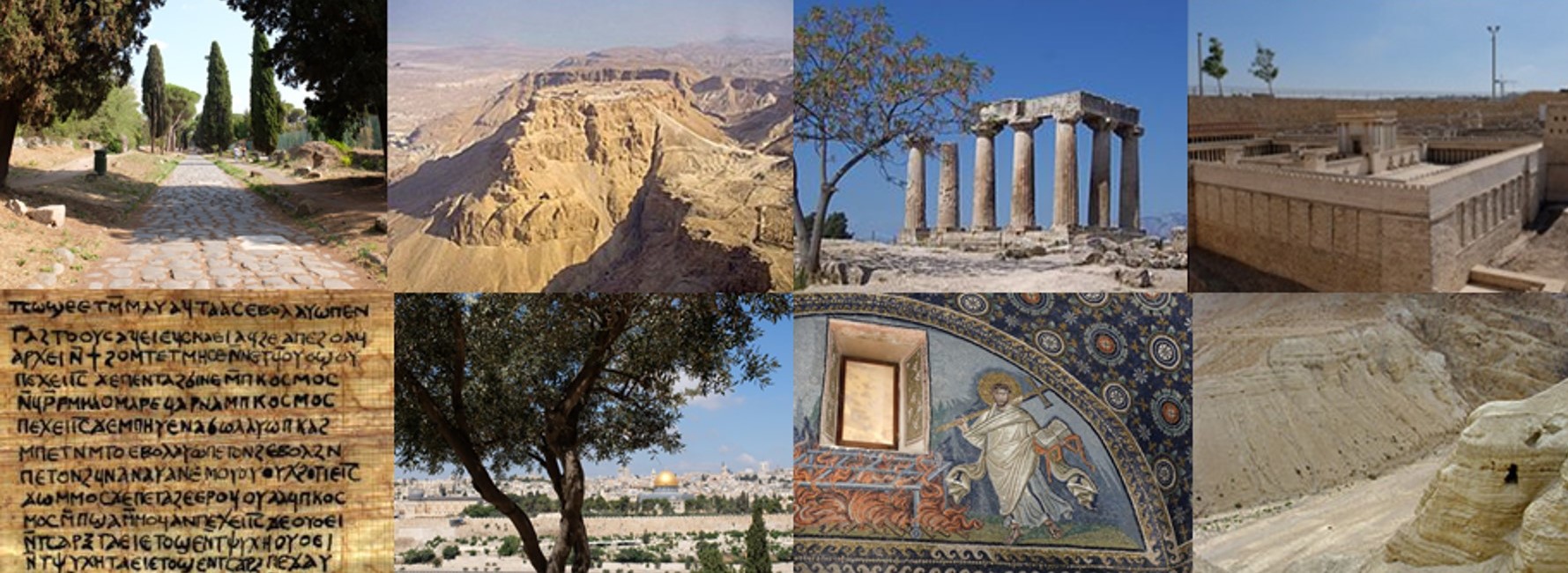Session 1
Sandra Huebenthal, Passau University, ‘Homo Oeconomicus: An Unlikely Reader of the Parables?’
Adele Reinhartz’ attempt to befriend the Beloved Disciple was a milestone in Johannine scholarship, although it was based on a scientific no-go. Reinhartz promoted of the implied author of the Fourth Gospel to a real person she could interact with and showed that an occasional violation of scientific rules can be fruitful. This paper aims at a very similar thing: For the sake of the argument, it promotes the economic model of the “homo oeconomicus” to a real person and follows him along reading some of the Matthean and Lukan parables. It will turn out that the rational agent is not an unlikely reader of the gospel at all, and that reading Parables through the lens of modern economic theory provides fresh perspectives and a different vocabulary for understanding the Gospels and the evolution of cooperation.
Ellen Howard, Ludwig-Maximilians-Universität, Munich, ‘Seeing and Speaking: The Dynamics of Focalization in the Prodigal Son’
This paper will focus on narrative focalization within the Parable of the Prodigal Son as presented in the Gospel of Luke. This study aims to delve into the intricacies of narrative perspectives, particularly focusing on ‘who speaks’ and ‘who sees’ within the parable. By examining the narrator’s role and the shifts between internal and external focalization, this paper seeks to uncover the layers of meaning that contribute to the overall impact of the parable. The narrative technique employed in the parable offers a unique lens through which the characters and their actions are perceived, thereby influencing the reader’s understanding and interpretation of the text. Through a detailed analysis of the narrative structure and the use of focalization, this paper will assess the implications of these narrative choices on the depiction of characters and the conveyance of the parable’s moral and theological themes. The study will draw upon existing scholarly work on biblical narrative techniques while also contributing new insights into the function of focalization in biblical parables.
Session 2: Book Review Panel
We will be reviewing Justin Strong’s book, The Fables of Jesus in the Gospel of Luke: A New Foundation for the Study of Parables, Studies in Cultural Contexts of the Bible 5 (Paderborn: Brill, 2021). Dr. Justin David Strong is Associate Professor in New Testament Studies at MF Norwegian School of Theology, Religion and Society in Oslo, and his book won the Manfred Lautenschlaeger Award for Theological Promise in 2022.
We are delighted that our reviewers will be Richard Burridge, Honorary Research Fellow at the University of Manchester, and James Crossley, Academic Director of CenSAMM and Professor of Bible, Society and Politics at MF Oslo.
Session 3
Barbara Beyer, University of Erlangen-Nuremberg, ‘John the Baptist, the New Samuel’
The gospels portray John the Baptist as a new kind of Elijah: his words and actions resemble those of the great prophet, thereby preparing for the ministry of Jesus (Luke 1:17). This serves to create anticipation (Mal 3:23–24), idealise John as a witness to Jesus’ identity (Luke 3:16–17), and embed the narrative in the salvation history of Israel—a prominent theme in Luke. However, there is another typology specific to Luke that serves similar purposes: that of John as a new kind of Samuel, the judge. As it is more subtle, it has thus far been overlooked. Yet the narrative around his birth contains clear allusions, e.g. the motif of the barren mother and direct quotation (Luke 1). Moreover, by portraying John as a kind of Samuel, he carries a transitionary role in history as a new time for the people of God commences. This paper will compare the two typologies (John–Elijah, John–Samuel) in the gospels and thus illuminate how these traditions are situated in the textual universe of ancient Christianity.
Tyler Brown, Keble College, University of Oxford, ‘The Sign of Jonah as the Key to the Lukan Jesus’s Opening of the Scriptures (24:44–47): Retrieving and reinforcing a forgotten patristic view’
Where is it really “written” (γέγραπται) that the Messiah must (1) suffer, (2) rise from the dead on the third day, and that (3) repentance must be preached to all nations in his name (Luke 24:44–47; cf. 24:25–27)? Despite this claim’s foundational importance, the answer has proven elusive.
Luke’s Sign of Jonah has similarly proved an enigma, with most today holding that it refers only to Jonah’s preaching. However, a neglected thread of patristic interpretation identifies the Sign of Jonah with the entire sequence of death, third-day resurrection, and proclamation of repentance to all nations.
The paper traces this view in Justin, Hilary, Ephrem, and ps.-Chrysostom. Then, it uncovers hitherto overlooked verbal connections between Greek Jonah, the Sign of Jonah pericope, and the opening of the Scriptures (Luke 24:44–47) which reinforce this ancient opinion. Concluding that Jonah is the key intertext for this Lukan claim, the paper recovers and re-presents a patristic view of Luke’s Sign of Jonah and opening of the scriptures different from any on offer in contemporary scholarship.

